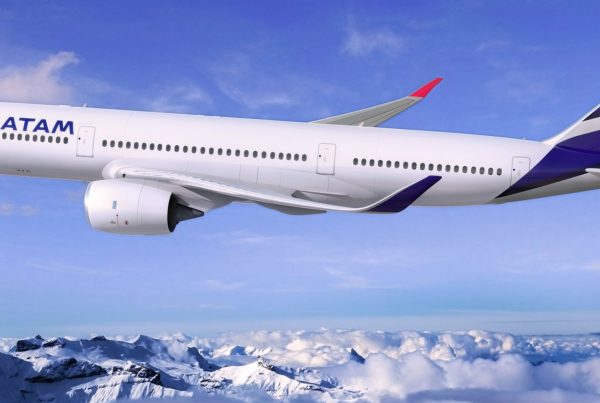By Dr. Marc Nientker (Operation Director, NL)
Coming from an econometrics background, when I entered the business world, I quickly found myself drawn to pricing challenges. One persistent issue in this space is endogeneity: the hidden biases that skew price elasticity estimation leading to unoptimized revenue. It’s a hot topic in airline pricing and revenue management (PRM), where missteps can cost literally millions.
”It’s a hot topic in airline pricing and revenue management (PRM), where missteps can cost literally millions.
At last year’s AGIFORS Revenue Management Study Group, a presentation on “Price Endogeneity in Demand Models for Revenue Management” sparked serious buzz – earning Dr. Stacey Mumbower, assistant professor at Embry-Riddle Aeronautical University, the “Best Presentation” recognition.
As the decision science partner for airlines, we knew we had to go deeper. Our hunch was confirmed when my talk, “Estimating Willingness-to-Pay Under Unobserved Confounders”, was selected for this year’s agenda. To prepare for my presentation I met with Stacey to explore her views on endogeneity in the airline context.
The Hidden Biases That Are Distorting Your Models
A source of endogeneity, omitted-variable bias (or omitted confounders as we say in econometrics) is a major pricing pain point that creeps in when factors that influence demand – and correlate with price – are left out of a pricing model. Examples include time-to-departure, competitor moves, booking trends, etc. Miss them, and you misjudge willingness-to-pay (WTP) and skew elasticity estimates.
Omitted variables aren’t the only threat. Stacey pointed to another potential risk: optimization-induced bias. It’s subtle yet powerful. And it’s often overlooked. Optimization-induced bias kicks in when price and demand respond to each other in a feedback loop.
Picture this: a revenue management system (RMS) forecasts strong future demand, so it raises prices. Those higher prices then shape the actual demand that follows. It’s a simultaneity problem – demand drives pricing, and pricing drives demand. If not accounted for, the model misreads the signal and distorts insights.
Stacey highlighted a paper by Fukushi, Delgado, and Raveau (2024) that cut to the heart of the issues of omitted variable and optimization-induced bias. The study showed that omitted-variable bias led to significant distortion in price elasticity estimates. What about optimization-induced bias? Less severe – but only if confounders are properly controlled. The degree of risk depends on how much the RMS leans on anticipated demand to set prices.
Double Machine Learning Slashes Estimation Errors
”The two-stage approach combines machine learning techniques with a dynamic Bayesian model to slash price elasticity estimation error from 25% to just 4%!
As it was going to be my first time attending AGIFORS this year, Stacey name-checked Ravi Kumar, Principal Scientist at PROS, as someone I should meet. His team’s paper “Machine Learning-based Framework for Robust Price-Sensitivity Estimation with Application to Airline Pricing” had her attention.
His study applied double machine learning (DML) to airline pricing and demand data to estimate price sensitivity more effectively. The two-stage approach combines machine learning techniques with a dynamic Bayesian model to slash price elasticity estimation error from 25% to just 4%!
Flight Quality (and Middle Seats) Matter
When I asked Stacey about the biggest sources of omitted-variable bias in airline demand modeling, Stacey had a sharp way to frame her answer – flight quality from the customer’s perspective. It includes whether the flight is nonstop or connecting, total travel time, preferred departure times, and even details like how full the plane is – since someone might avoid a flight to skip a middle seat!
Stacey also emphasized broader factors like holidays, major events, and seasonal trends (e.g., summer travel surges) that affect both demand and pricing. If not properly accounted for, these omitted variables can lead to significant bias in price elasticity estimates.
Observational Methods Remain Powerful
In my own practice, I lean towards dealing with endogeneity using observational methods. Naturally, I was eager to find out what Stacey’s perspective was on their strengths and weaknesses. Instrumental variables (IV) is an area Stacey is very familiar with, having worked on it since her dissertation days.
Stacey was clear in her belief that even though IV has been around for a long time, they remain powerful tools. Their big advantages? They can cut through multiple sources of endogeneity without needing to pinpoint the exact cause. You can use historical observational data, and they’re especially useful when randomized experimentation is not feasible.
Stacey also emphasized broader factors like holidays, major events, and seasonal trends (e.g., summer travel surges) that affect both demand and pricing. If not properly accounted for, these omitted variables can lead to significant bias in price elasticity estimates.
When Market Prices Become Instruments
I think all practitioners agree that the hardest part of using IVs is finding a good instrument. Stacey shared a practical solution based on what’s known as a Hausman-type price instrument that works well in the airline business.
The method involves using average prices from similar but unrelated ’markets’ as proxies.
Say you’re estimating price sensitivity on the JFK → LAX route. Instead of relying on direct variables, you might pull in prices from routes like BOS → SFO or DCA → SEA—markets with similar dynamics but no direct influence on JFK → LAX bookings.
Micro-Experiments: The Next Frontier
Innovators and early adopters such as LATAM Airlines, Air France KLM, Alaska Airlines, American Airlines, British Airways, and Lufthansa Group are actively embracing pricing experimentation. At ADC Consulting, we know – we are helping some of them.
”For most airlines, shifting away from optimized pricing, even briefly, feels risky.
For most airlines, shifting away from optimized pricing, even briefly, feels risky. Stacey shared her excitement about a new approach by Jiang and Li (2022)1 that combines small-scale price experimentation with instrumental variables IV.
This method uses tiny, controlled price tweaks – within just ±5% – to create meaningful variation without jeopardizing short-term revenue. These small deviations function like randomized interventions, which can then be used to construct instruments. The approach effectively allows businesses to build their own instruments rather than struggling to find ideal ones.
Where the Biggest Opportunities Lie
When it comes to the biggest opportunities for causal inference in the airline industry, we are very much aligned with Stacey’s response – its dynamic offers and personalization driven by NDC and retailing innovation.
Airlines are already exploring dynamic and continuous pricing, but to accurately evaluate new algorithms and strategies, it’s critical to estimate the causal impact of price. And while there’s a fair amount of work on fares, Stacey pointed out that ancillary products – like bags and seats – have been largely overlooked. As airlines move toward dynamic ancillary pricing, understanding price sensitivity becomes much more important.
“To me,” Stacey said, “Pricing and offers are really where the biggest causal inference opportunities are right now.”
My AGIFORS Presentation
As PRM practitioners advance their practices, endogeneity will increasingly surface as a concern. In my AGIFORS session, I introduced a validated methodology that addresses the issue. It helps PRM teams isolate the true causal impact of price, even in the noisy, real-world setting of modern airline retailing. More on this topic is coming up next. Follow ADC on LinkedIn for updates 💡.
Continue the Conversation
If you would like to learn more about advanced experimentation for revenue management, please contact Vladimir Antsibor and Joël Gastelaars.
Stay Updated
Interested in the latest case studies, insightful blog articles, and upcoming events? Subscribe to our data & AI newsletter below!









